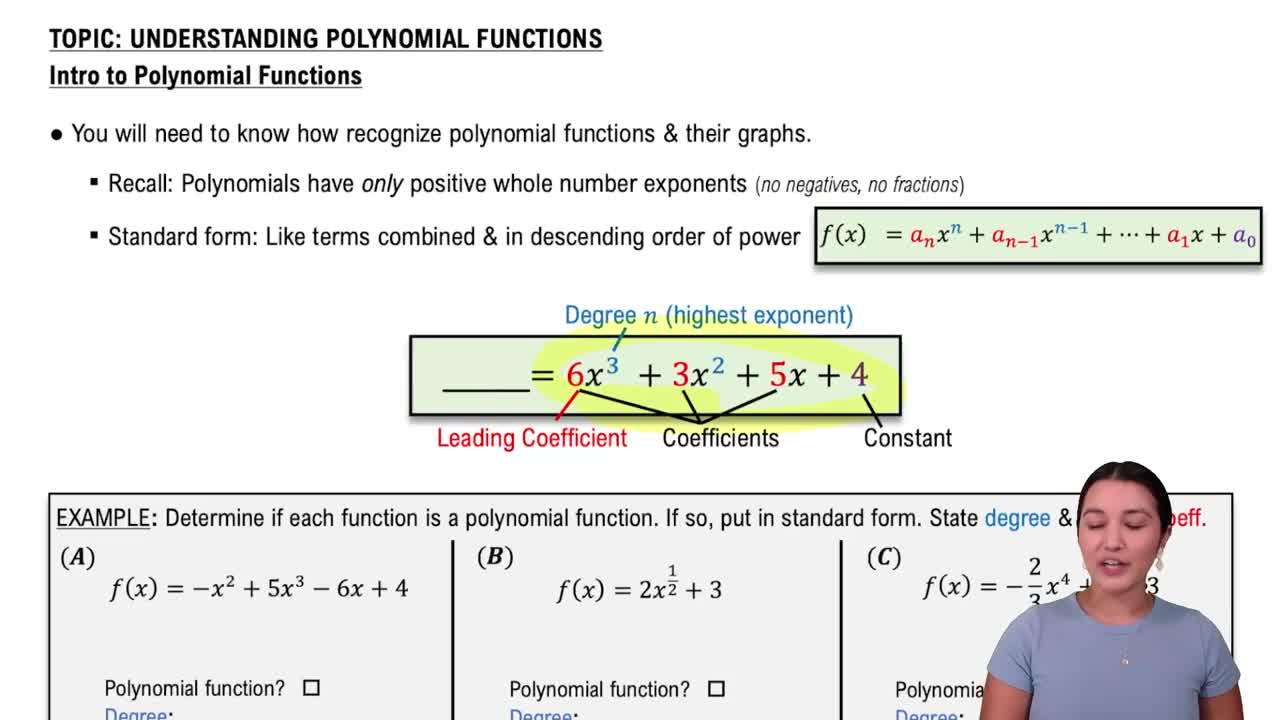Here are the essential concepts you must grasp in order to answer the question correctly.
Function Subtraction
Function subtraction involves taking two functions, ƒ(x) and g(x), and creating a new function (ƒ-g)(x) by subtracting the output of g(x) from ƒ(x) for each x in the domain. This operation is defined as (ƒ-g)(x) = ƒ(x) - g(x). Understanding this concept is crucial for combining functions and analyzing their behavior.
Recommended video:
Adding & Subtracting Functions
Domain of a Function
The domain of a function is the set of all possible input values (x-values) for which the function is defined. For polynomial functions like ƒ(x) and g(x), the domain is typically all real numbers, as polynomials do not have restrictions such as division by zero or square roots of negative numbers. Identifying the domain is essential for understanding where the function operates.
Recommended video:
Domain Restrictions of Composed Functions
Polynomial Functions
Polynomial functions are mathematical expressions that involve variables raised to whole number powers, combined using addition, subtraction, and multiplication. In this case, both ƒ(x) = 2x² - 3x and g(x) = x² - x + 3 are polynomials. Recognizing the characteristics of polynomial functions, such as their continuity and smoothness, is important for analyzing their graphs and behaviors.
Recommended video:
Introduction to Polynomial Functions



